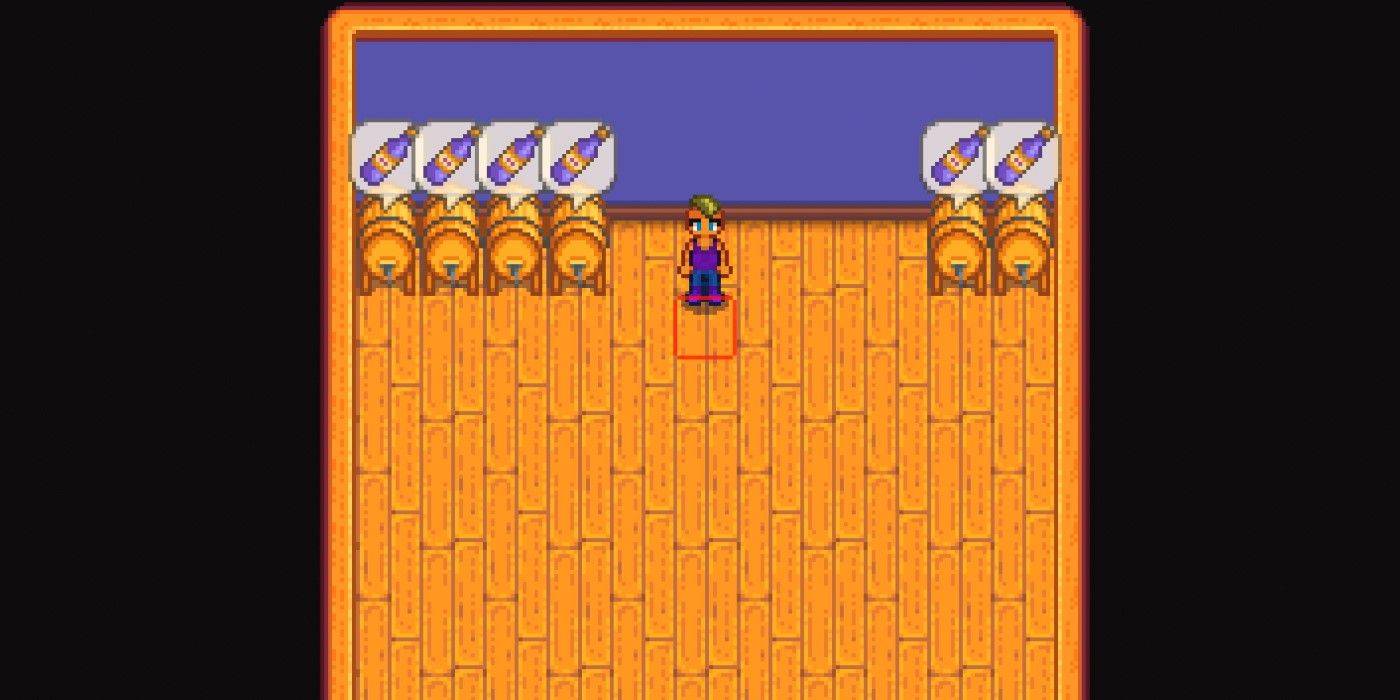Stardew Valley: Preserves Jar Vs Kegs
This Stardew Valley guide compares Kegs and Preserves Jars, two crucial tools for transforming crops into valuable artisan goods. Both increase profits significantly, especially with the Artisan profession's 40% sell price boost. However, their crafting costs, processing times, and resulting product values differ.
Kegs and Preserves Jars: A Head-to-Head Comparison



Important Note: Input item quality doesn't affect output quality or selling price. Use lower-quality produce for maximum efficiency.
Preserves Jars:
Produce: Jelly, Pickles, Aged Roe, Caviar. Obtained via Community Center bundles, Prize Machine, or crafting (Farming Level 4).
Crafting Recipe: 50 Wood, 40 Stone, 8 Coal.
| Item In Jar | Product | Base Sell Price |
|---|---|---|
| Any fruit | [fruit name] Jelly | 2 x [base price] + 50 |
| Any vegetable | Pickled [item name] | 2 x [base price] + 50 |
| Morel/Chanterelle etc. | Pickled [item name] | 2 x [base price] + 50 |
| Roe (except Sturgeon) | Aged [fish name] Roe | 2 x [roe price] |
| Sturgeon Roe | Caviar | 2 x [roe price] |
Kegs:
Produce: Wine, Beer, Pale Ale, Coffee, Juice, Green Tea, Vinegar. Obtained via Artisan/Brewer's Bundles, Prize Machine, or crafting (Farming Level 8).
Crafting Recipe: 30 Wood, 1 Copper Bar, 1 Iron Bar, 1 Oak Resin.
| Item In Keg | Product | Base Sell Price |
|---|---|---|
| Any fruit | [fruit name] Wine | 3 x [base price] |
| Any vegetable (except hops/wheat) | [item name] Juice | 2.25 x [base price] |
| Hops | Pale Ale | 300g |
| Wheat | Beer | 200g |
| Honey | Mead | 200g |
| Tea Leaves | Green Tea | 100g |
| Coffee Beans (5) | Coffee | 150g |
| Rice | Vinegar | 100g |
Kegs vs. Preserves Jars: Which is Better?
Kegs: Higher profit potential (especially with Cask aging for Iridium quality), but more expensive to craft and longer processing times.
Preserves Jars: Cheaper and faster, ideal for early game and low-value, high-yield crops.
Conclusion: Both are valuable. Kegs offer greater long-term profit, but Preserves Jars provide a quicker return on investment, especially early in the game. A balanced approach, using both, is recommended for optimal farm efficiency. Consider the individual crop's base price and processing time when making your choice.
-
Here’s our curated selection of the top Android fighting games. One of the biggest appeals of gaming? You can unleash unlimited virtual violence without consequences. These games not only allow but actively reward you for delivering jaw-dropping combAuthor : Mia Nov 26,2025
-
New details have emerged about the long-rumored remake of The Elder Scrolls IV: Oblivion, with leaked screenshots and images showcasing significant visual upgrades in The Elder Scrolls IV: Oblivion Remastered. Leaked Images Surface From DeveloAuthor : Hannah Nov 26,2025
- WWE Superstars Join Call of Duty Warzone: Mobile Roster
- Monster Hunter Now Adds New Monsters for 2025 Spring Fest
- Midnight Girl is a minimalist point-and-click adventure set in Paris in the 60s, now open for pre-orders on mobile
- "Grand Outlaws Unleashes Chaos and Crime on Android Soft Launch"
- Mobile Legends: Bang Bang – Best Lukas Build
- "Fallout Season 2 Premieres in December 2025, Season 3 Confirmed"





















